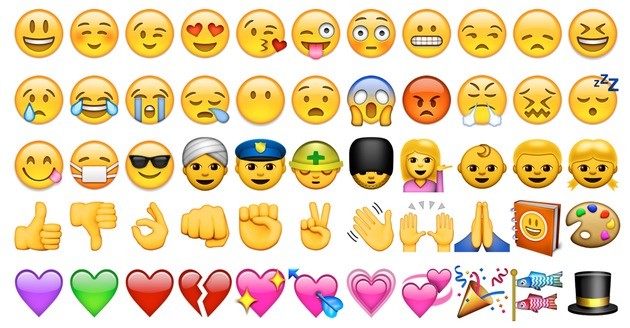Texting Symbols: A Guide to Understanding and Using Common Abbreviations and Emoticons
Texting has become a popular form of communication, and with it comes the use of various symbols and abbreviations to convey messages more efficiently. In this article, we will explore the world of texting symbols, providing a comprehensive guide to understanding and using common abbreviations and emoticons. Whether you're a seasoned texter or new to the digital language, this guide will help you navigate the world of texting symbols with ease.
1. Introduction to Texting Symbols

Texting
Texting symbols, also known as text abbreviations, shorthand, or emoticons, are concise representations of words, phrases, or emotions used in text messages and online communication.
These symbols have evolved over time to facilitate faster and more expressive conversations.
2. Common Abbreviations
LOL: Laugh Out Loud
BRB: Be Right Back
OMG: Oh My God
IDK: I Don't Know
BTW: By The Way
TTYL: Talk To You Later
ASAP: As Soon As Possible
FYI: For Your Information
IMO: In My Opinion
JK: Just Kidding
These are just a few examples of commonly used abbreviations in text messaging. They are often employed to save time and space while conveying the intended meaning.
3. Emoticons and Emoji
Emoticons and emoji are graphical representations used to express emotions or convey messages in a text-based format. Here are some popular examples:
:) or :-) : Smiley face, indicating happiness or friendliness.
:( or :-( : Sad face, indicating sadness or disappointment.
:D or :-D : Big smile or laughter.
;) or ;-) : Winking face, indicating joking or flirtation.
<3 : Heart symbol, expressing love or affection.
Emoji, on the other hand, are more detailed and colorful representations of various objects, emotions, and activities. They are widely used across different messaging platforms and social media.
4. Texting Symbol Etiquette

Texting Symbol Etiquette
While texting symbols can add fun and expressiveness to conversations, it's important to use them appropriately and consider the context and recipient. Here are some etiquette tips to keep in mind:
Know your audience: Adapt your use of texting symbols based on the recipient's familiarity and preferences. Some people may be less familiar with certain symbols or find them confusing.
Avoid overuse: Excessive use of texting symbols can make messages difficult to read and understand. Use them sparingly to enhance your message, not overpower it.
Clarify when needed: If you're unsure whether the recipient understands a particular symbol, feel free to provide clarification or ask if they are familiar with it.
Respect professional settings: In professional or formal settings, it's best to use texting symbols sparingly or avoid them altogether to maintain a more professional tone.
5. Evolution of Texting Symbols
Texting symbols have evolved over time, adapting to changing communication trends and technology. New symbols and abbreviations emerge regularly, influenced by popular culture, memes, and internet trends.
Staying updated on current texting symbols can help you stay in tune with the latest digital language.
6. Embracing Creativity and Personalization
While understanding and using common texting symbols is helpful, don't be afraid to embrace your creativity and personalize your messages.
You can create your own unique combinations of symbols, abbreviations, or even invent new ones that resonate with your style and personality.
Texting symbols have become an integral part of digital communication, enabling us to express emotions, convey messages efficiently, and add a touch of personality to our conversations. Understanding common abbreviations, emoticons, and emoji can enhance your texting experience and help you connect with others in a more expressive way. Remember to use texting symbols appropriately, consider your audience, and adapt to different communication contexts. So, whether you're sending a quick text to a friend or engaging in a lively group chat, embrace the world of texting symbols and enjoy the language of digital communication.